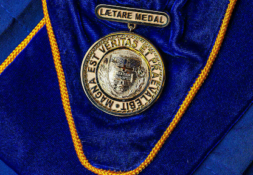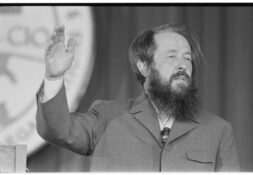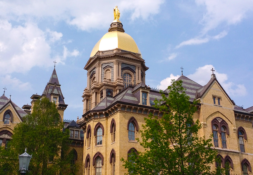Opal Tometi and Patrisse Cullors refer to Martin Luther King, Jr., as a “Christian, cis-heteronormative man” during Walk the Walk Week
Two of the three creators of the Black Lives Matter (BLM) movement, Opal Tometi and Patrisse Cullors, spoke on campus to over 500 students, faculty, and community members on January 18. The event coincided with Martin Luther King, Jr. Day and was held as part of Walk the Walk Week, put on by University President Father John Jenkins, CSC, and the President’s Oversight Committee on Diversity and Inclusion.
Tometi began by explaining that the BLM hashtag and movement began with a Facebook post regarding the acquittal of George Zimmerman, who fatally shot 17-year-old Trayvon Martin in 2012.
“We started using social media to connect our communities and to amplify this message that our lives matter despite a society and a system that continues to devalue and continues to dispose of us in a way that is egregious, is deplorable, and we know it is happening,” Tometi said.
It was not until the shooting death of Michael Brown in Ferguson, Missouri, however, that the movement developed into what it is today. It was then, Tometi explained, that the movement began to converge and strategize together.
Cullors then discussed the guiding principles of the movement, saying they “have everything to do with” challenging “cisnormativity, heteronormativity, and patriarchy” and pushing a “trans-feminist lens.” She stated that history erases or limits the portrayal of contribution of women in the civil rights movement, and women have always been the architects of the movement.
“We don’t need a black, Christian, cis-heteronormative man to take us to the Promised Land,” she added.
Alex Streff, a senior at Notre Dame, told the Rover he believes Cullors and Tometi bred divisiveness when they criticized King. “When they had the opportunity to make compelling points with universal appeal, they meddled in almost every other hot button issue,” he said. “What good could come from alienating Christians along the way? Believe it or not, the vast majority agree with the movement.”
Cullors responded to a common objection to BLM’s approach, bringing up the “long legacy in the black community of disruption.”
“[Disruption] is the only way we have seen systemic change happen in this country,” Cullors said. “It is not through sitting with elected officials behind backdoors. That’s not the way we’ve seen an evolution in the culture.”
“I believe that the problems that led to this movement are real issues that nearly everyone can agree must be addressed,” Streff acknowledged. “However, the founders … made it very clear that they are not interested in assembling a coalition of support for reform.”
Tometi and Cullors went on to explain healing justice and the role it plays in maintaining the overall health of BLM activists.
“What we’ve witnessed is that trauma exists everywhere, that we are constantly being traumatized,” Cullors said. “Whether that is through being in [predominantly-white institutions], whether that’s through having to see the consistent killings and brutalization of our people … or whether that’s just living your life as a black person.”
Cullors introduced the idea of collective-care, as opposed to self-care, which involves community members helping to sustain each other and fighting fatigue.
In order to attain better race relations on campus, Cullors expressed the need for honest conversations about the role institutions, including universities, have had in creating a hateful environment. In addition, she said the failure to address insults and hate speech creates an environment that is increasingly violent towards black students in particular and students of color generally.
“The moral of the story is [that] black life is worth protecting, and if we don’t show up for that—and this is to the administration—if you don’t show up for the black students on your campus, you are telling them their life is not worth protecting,” Cullors said.
Tometi concluded with a call to do the work and to take a step of faith by joining the movement. She told students they are not by themselves and should join an organization that helps them practice resilience and resistance.
As for the future of the movement, Cullors shared, “That’s really not up to us. It’s really up to all of us. We have ideas around what our contributions are to the movement, and we’ve named that. But really … it’s in our hands. The sky is the limit.”
Freshman Eric Duarte told the Rover that he thought the talk was engaging and that the co-founders were skilled at speaking to a large crowd. “I could easily tell that they had done this type of thing before and that they were really passionate about the topic,” he said. “I know that some people may have been offended or confused about some of the things they said, but I thought they were coming from a sincere place.”
“The goal of Black Lives Matter is admirable, the tactics are horrendous,” Streff concluded. “Without being laser focused on their core issue, and only that issue, the movement will collapse as the founders put their goal aside to address each issue of the day.”
Matthew Connell is a freshman studying political science and economics. He is following the 2016 presidential race closely, so if you want to chat about the Donald’s latest drama you can contact him at mconnel6@nd.edu.






Leave a Reply